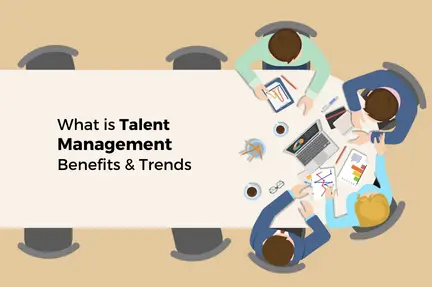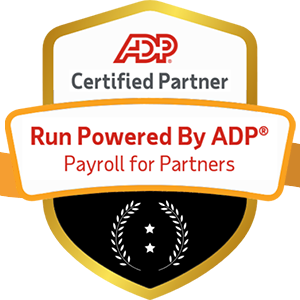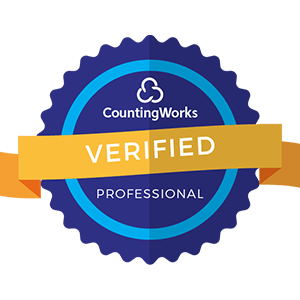
The definition of talent management is the meticulously planned, strategic process of bringing on the right personnel and assisting them in reaching their full potential while keeping organizational objectives in mind.
Thus, the process entails identifying talent gaps and open positions, locating and onboarding qualified candidates, growing them within the system and developing necessary skills, training for expertise with a future-focused approach, and successfully engaging, retaining, and motivating them to achieve long-term business goals.
The definition highlights the broad scope of talent management, showing how it pervades all facets of human resource management at work while ensuring that the firm achieves its goals. Thus, it is the process of bringing on the appropriate personnel and preparing them to help the firm as a whole.
To ensure the success of the company, a number of components and subprocesses fall under the broad category of talent management.
Examples of contact points that are equally significant include determining the appropriate talent gaps for the present and the future, finding the appropriate talent pools and best-fit individuals, recruiting them, and then maximizing their current skills and capabilities while assisting them in growing.
Everything required to find, interview, hire, and onboard personnel is included in talent acquisition. Talent and performance are largely concerned with internally locating, developing, and planning for required abilities, as well as monitoring organizational performance.
More specifically, talent management is about bringing out the best in people, creating career paths that allow them to thrive, matching essential skills with occupations and specific employees, and ensuring that learning is focused and constant.
Talent management should not be seen as a distinct business process; rather, it should be incorporated into the majority of the company's business processes and operations.
It can range from connecting employees with job and development opportunities through hiring agencies to company-wide initiatives aimed at elevating talent through training, learning, mentorship, and tailored workplace experiences.
ADP is promoted as an all-in-one, customizable, cloud-based human resources solution. ADP's strengths include Human Resource Management, Payroll, Benefits, Talent Management, Leadership Development, Team performance, Time & Labor Management, Learning and Analytics, and Return to Office.
Business and human capital management (HCM) methods have progressed tremendously since their inception decades ago. Today, a fundamental shift in the nature of work, new technologies, and the requirements of new generations are transforming how work is done, how people interact, and how companies run.
As a result, firms are reinventing performance management, shifting away from yearly performance evaluations and employee rankings and instead focusing on what individuals can do to boost their contributions in the future rather than demonstrating what they've done in the past.
The COVID-19 epidemic also, almost immediately, prompted a massive transition to remote work in order to preserve employees' health and safety. As the months passed and firms and employees adjusted, many workers began to envisage new alternatives that were not geographically limited.
Companies have followed suit. Talent management will have to iterate once again in this environment, which may include remote employees for some time to come, to compensate for less face time, more distant work, more remote learning and development, and more talent from more corners of the world.
Talent management systems are concerned with workforce and employee career advancement. Simply put, talent management systems are at the heart of corporate performance because they deal with every organization's most valuable asset: its people.
The following areas are covered by talent management processes:
The Business Strategy for the Company
Here are the plans for the company's development and expansion, revenue, and all other aspects that will determine when and where talent is needed and in what capacity.
Workforce Preparation
Workforce planning at this stage defines the skills and prospective personnel required to carry out the company plan. However, talent acquisition or talent management is responsible for the implementation and strategy for acquiring the necessary skills and workers.
Onboarding
Onboarding, according to HR specialists, begins when a candidate accepts a job offer and concludes when a new employee is completely integrated and functioning as expected.
Whether or not an organization delivers all of the onboarding items on the list, providing all new workers with a thorough, efficient, and consistent introduction to their new organization is a worthwhile investment.
According to research, the quality of onboarding experienced by new workers has a significant influence on engagement, performance, and longevity, among other aspects.
Management of Performance
Traditional performance management is preoccupied with the past and "monitoring" performance. Companies, on the other hand, are beginning to pivot toward performance enablement, a forward-thinking approach aimed to empower people to drive their own career growth.
Continuous communication and growth (continuous performance management) are emphasized in performance enablement procedures, as is a larger emphasis on establishing professional experiences.
Training and Performance Enhancement
Workers may attain their full potential by using training, online learning, and other resources to enhance their skills and capacities and prepare for new employment prospects.
Companies that wish to keep their employees engaged and address the skills gap in their businesses through reskilling or upskilling must prioritize learning and talent mobility.
In the midst of the epidemic, virtual learning has grown and become a critical resource for businesses looking to reskill or upskill their workers and adapt to changing business demands.
Planning for Succession
This guarantees that skilled managers and leaders advance through the levels of the organization.
Benefits and Compensation
Compensation and perks entice employees to join the firm and aid to retain top personnel.
Critical Thinking and Gap Analysis
Organizations are undergoing transformations, notably in the field of digital skills, which are required to become more agile.
Companies may better plan for and develop a workforce that fills the gaps and roles needed by the organization to take full advantage of all possibilities by analyzing the skills of the workforce now and the predicted skills and capabilities needed in the future.
Even with the best of intentions, typical obstacles can thwart the most careful talent management strategies. Inaccurate data, laborious and inconsistent procedures, a lack of executive buy-in, and unconscious bias in decision-making are some of these difficulties.
Companies may overcome these and other typical problems by implementing five essential principles of successful personnel management practices.
1. Employee Experience Should Be Prioritized
Prioritizing employee experience enables firms to tackle challenges while also adding value via improved performance. It will close the success-failure gap, resulting in better decision-making.
2. Aligning Talent Acquisition with Business Objectives
Organizations must create a talent acquisition strategy that focuses on defining and technically assisting newly hired personnel in order for them to achieve their company objectives. It assists businesses in meeting their business objectives, which displays their greatness and effectiveness.
3. Enhancing Training Efficiency
When beginning their onboarding process, organizations must establish work-related training programs for newly hired staff. Create training programs focused on improving decision-making and workplace processes, as well as increasing knowledge via innovation.
4. Flexibility
Workplace flexibility enables firms to strengthen departmental and management interactions and connections across managers, business divisions, and functions. Organizations can also delegate decision-making authority to lower-level employees and encourage freshly hired staff to develop and implement innovative ideas.
5. Performance-Based Development
Utilize staff evaluations to identify gaps in their competencies and provide the appropriate type of training. The L&D department should identify areas where employees scored poorly and provide training for each. It is critical to get the most out of such training by comparing staff performance to the assessment process.
Talent management entails a continuous process of attracting top-tier personnel, developing their knowledge and abilities through training, encouraging them to enhance their performance, and maintaining a healthy work environment overall.
When managed effectively, these procedures may empower your staff while also assisting the organization in achieving its ambitions and goals.
Providing professional development possibilities through appropriate training programs is one of the first measures to consider when managing your employees, regardless of your industry or business.
Instead of implementing monotonous seminars, initiatives, and activities or providing them with difficult-to-read modules, you can create and deploy interactive learning content using employee learning tools such as microlearning platforms, video training software, learning management systems (LMS), and the like.
Employee appreciation, while frequently disregarded, may have a significant influence on a business. According to a Gallup poll, one of the most prevalent reasons for an employee leaving a firm is a lack of acknowledgment and gratitude.
Keeping your staff happy and engaged at work is the greatest method to reduce this risk. You may accomplish this by acknowledging their accomplishments, providing regular feedback, and rewarding them appropriately for their efforts.
When employees perceive that their company is interested in their growth and development, they are more engaged with their job. They are more inclined to depart the organization if they do not have possibilities for skill development and improvement.
However, by establishing a clear career path for them, you provide them the opportunity to improve their skills and knowledge and finally master their employment.
As an example, it opens the door to advancements to higher-level positions within your firm. Implementing career development techniques benefits your firm as well, resulting in enhanced employee satisfaction, increased productivity, higher staff retention rates, and improved performance.
Company culture encompasses the company's and its workers' habits, rituals, symbols, and ideals. It is frequently represented via corporate choices and employee relationships.
Finding the correct business culture has become one of the most crucial aspects for job searchers over the years. As an HR manager, you play a critical role in determining a potential employee's cultural fit with your organization.
You make it simpler for team members to interact with one another, stay involved with their job, and perform their obligations by identifying skilled workers who suit the organization's culture and key values.
HR managers must focus not only on acquiring and maintaining qualified individuals but also on aligning their career development with the broader aims and objectives of the firm.
Establishing essential objectives through effective communication and cooperation assists your team members in focusing on the company's major aims. Employees become more involved in their job when clear objectives and overall goals are in place.
As a result, they are able to achieve personal and organizational goals.
What are the most frequent performance indicators in a talent management system, and what do they mean?
A talent management system offers pre-built reports and graphs covering the fundamentals, such as:
While these measures are crucial, companies also want more information on the performance of their talent management programs. As an example-
1. Competency Gap Index
This is the gap between the capabilities required by the business to fulfill its objectives and those possessed by its present personnel.
The majority of skill gaps may be filled by implementing comprehensive training programs or by utilizing a talent management system to realign staff roles and responsibilities based on individual capabilities.
Significant skill gaps, on the other hand, can be damaging to production and may necessitate dramatic actions such as personnel replacements or a full restructure of organizational charts.
2. External Hires to Internal Promotions Ratio
Companies should be able to locate individuals internally for high-level roles before turning to external searches.
This is not always the case, since few organizations have fully utilized their talent management system to build and implement complete progression programs. This indicator acts as a "wake-up call," assisting businesses in determining if they are appropriately fostering their existing talent.
3. Index of Employee Satisfaction
How satisfied are present workers, and how likely are they to leave? It is vital to highlight that simply assessing the satisfaction index is insufficient.
Companies must utilize their people management system to identify the root reasons for high levels of unhappiness so that corrective action may be done to reduce turnover.
4. Index of Workforce Confidence
This statistic examines employee views of the organization's overall capabilities. Do employees feel that the organization and its employees are well-prepared to carry out major plans and accomplish strategic objectives?
Unlike the employee satisfaction index, which analyzes each individual's view of their own employment, this statistic gives information on the organization's reputation among its employees.
What additional key developments in the relationship between individuals and companies are emerging for 2022? - These five are, in our opinion:
1. Hybrid work
The last two years have demonstrated that it is feasible. It is now up to businesses to create lasting models for hybrid work and integrate them into their corporate culture. Working from anywhere and at any time should no longer be permitted.
Employees should be actively encouraged to select a workplace that meets their requirements and duties. This necessitates a variety of possibilities, ranging from working from home or a coworking space to the traditional office space, which provides the necessary actual interactions and personal exchanges among coworkers.
2. On-Demand Work
Hiring, borrowing, or sharing talent is already commonplace in other nations. More and more businesses are partnering with freelancers to adapt quickly to new issues and bring in fresh skills.
These "gigs" might be directed towards the company's own workers as well as other parties. This allows workers to test out different sectors for a period or take on responsibility for initiatives where their abilities are very beneficial.
Internal jobs support the establishment of dynamic hierarchies and are part of an active learning culture. This means that responsibility and decision-making authority are no longer fixed to a role, but rather shift according to the task and team composition.
3. Working less but more effectively
The New work has failed; let us now address it! That might be the driving principle for the year 2022. Despite the endless possibilities provided by digitization, far too many individuals are always working at their limits and have little time for all of the hobbies and desires that remain latent in them.
The 40-hour workweek has reached its end. Many objectives may be met with less, but wiser, more collaborative labor. But only if regular collaboration with several teams does not become a burden in and of itself.
Companies must teach staff to use digital technologies as well as communicate with one another, such as when providing positive feedback or declining requests from coworkers.
4. The Great Resignation: A Paradoxical Labor Market Case
Perhaps the most significant current trend in talent management is that more employees are quitting their jobs than ever before.
Although the phenomena have mostly been focused on by US observers, the Great Resignation has not spared Europe or Asia, and it is predicted to increase in 2022 as workers in these nations figure out their generally much longer notice periods.
Your employees are becoming much more selective in terms of how they value the time they offer you, both financially and in terms of other advantages such as work/life balance.
Evolving the way you work – and expect your employees to work – will be critical in managing them and guaranteeing your organization's success in the long run.
5. Adopting technology and tools to support workplace dynamics changes
The adoption of new HR toolkits and technology has always been reactive and heavily reliant on bottom-line results. However, large-scale changes in how we see work are pushing HR technology to the forefront.
We're all renegotiating the scope of our work right now. We're having complicated discussions about where work should be done.
All of this is happening as firms cope with the reality of more global and linked teams, which significantly increases compliance and operational challenges.
1. What is Talent Management?
Employers use talent management to recruit and develop a staff that is as productive as possible and likely to stay with their firm for the long run. This method, when applied carefully, may assist enhance the overall performance of the organization and ensure its competitiveness.
2. What is the difference between Talent Management and Talent Acquisition?
The process of finding and employing suitable individuals is known as talent acquisition. Talent management is the process of developing and retaining these competent individuals.
You won't be able to keep or unlock the potential of good personnel if you attract and hire them but don't invest in their growth.
3. Why is Talent Management important?
In order to achieve your hiring objectives, it is crucial to concentrate on talent management as part of your overall workforce management strategy.
This is because finding, developing, keeping, and promoting the appropriate people are key elements in this process.
4. What are the key components of talent management?
There are 5 key components of talent management:


